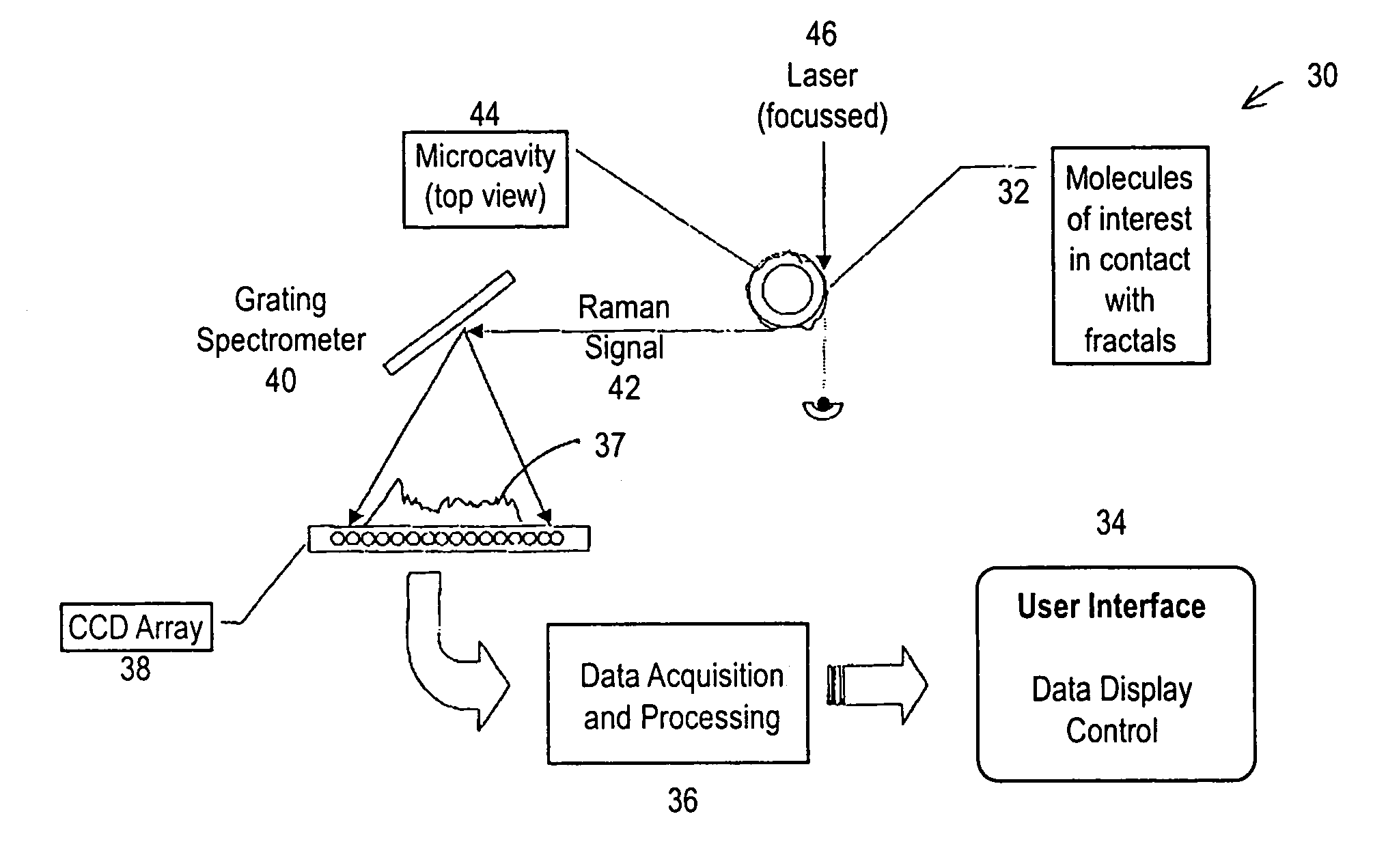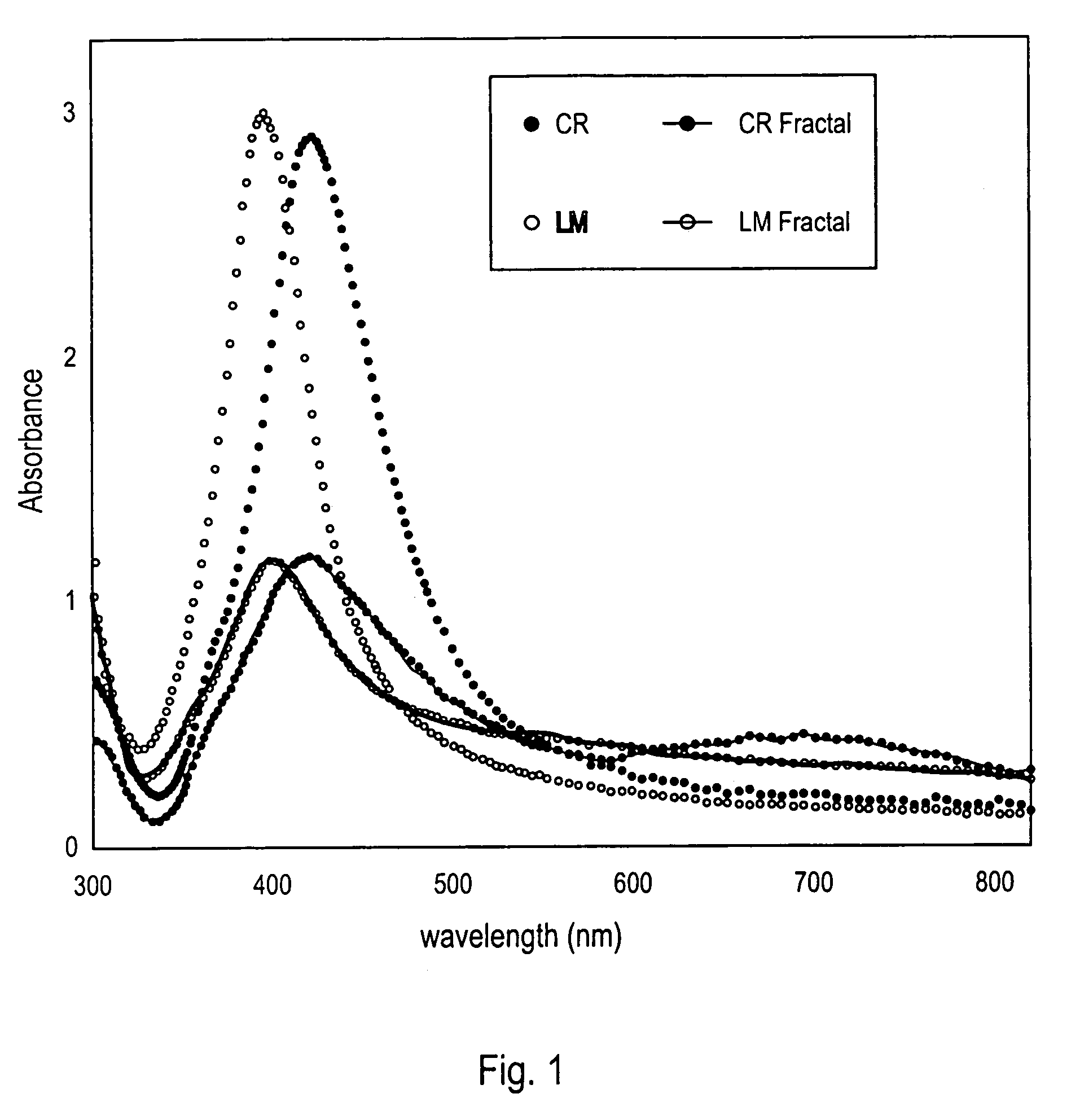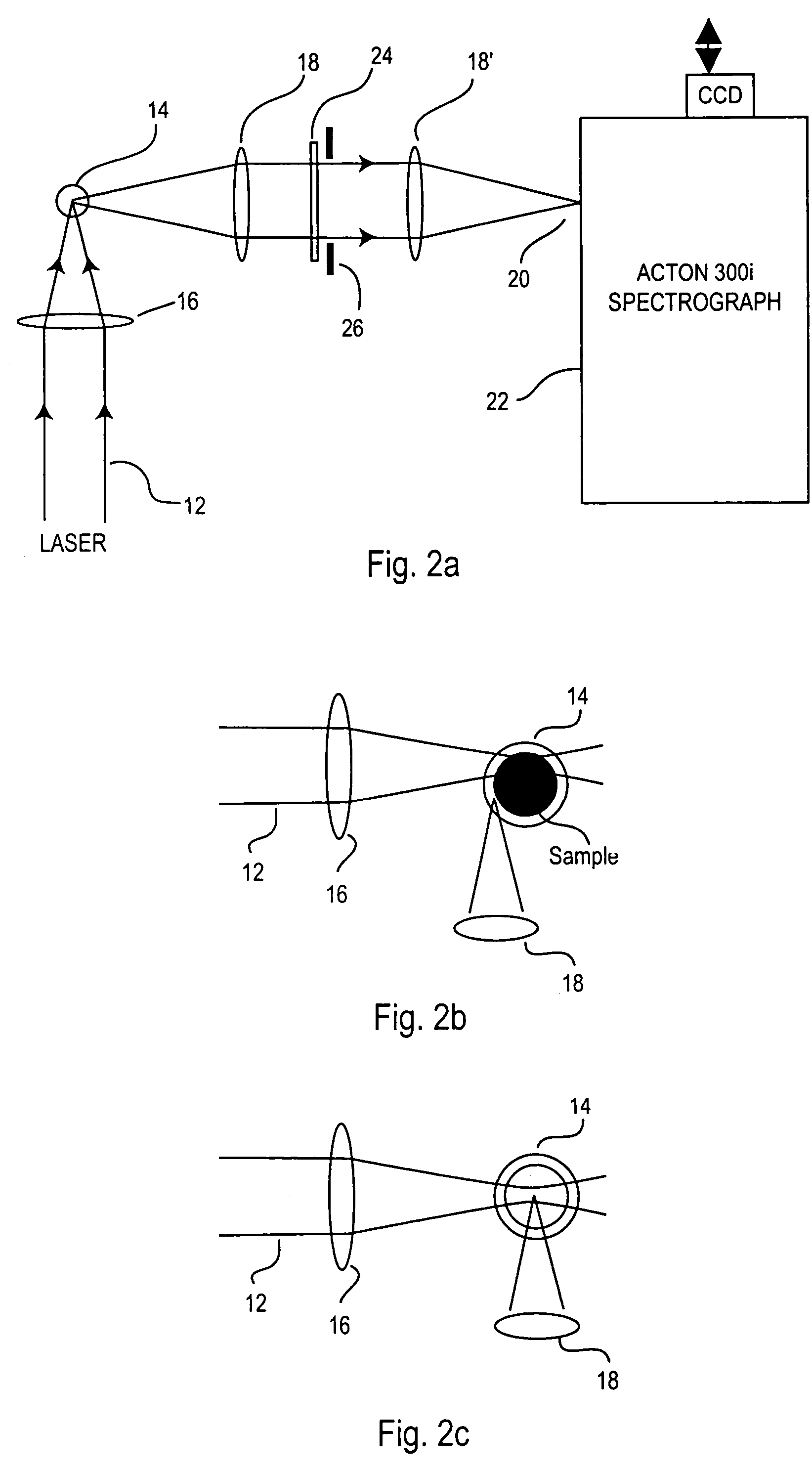Optical devices and methods employing nanoparticles, microcavities, and semicontinuous metal films
a technology of semi-continuous metal films and optical devices, applied in the field of optical devices and methods employing nanoparticles, microcavities, semi-continuous metal films, can solve the problems of large enhancement of optical emission, and achieve the effect of enhanced optical emission and enhanced optical emission of dye molecules
- Summary
- Abstract
- Description
- Claims
- Application Information
AI Technical Summary
Benefits of technology
Problems solved by technology
Method used
Image
Examples
example 1
[0171]Light detection and ranging (LIDAR) systems are versatile optical instruments that are currently used in a variety of atmospheric applications. LIDARs may be used to obtain: concentrations of a variety of atmospheric constituents such as chemical compounds, dust, volcanic ash, and water vapor; wind velocity and atmospheric turbulence profiles; and ultra-precise geodesy information. All LIDARs operate in a similar manner; a light source, usually a laser, is directed into the atmosphere through transmitter optics such as an optical telescope where it interacts with the atmospheric constituents. Some of the light produced by this interaction is collected by an optical receiver (typically, the transmitter telescope itself where, for some applications, it is spectrally analyzed, and then input to an optical detector. Optical detectors used in LIDAR systems are typically solid-state photodetectors; although having fairly good optical gain, they are susceptible to noise both fro...
example 2
OPO
[0175]Optical parametric oscillators (OPOs) are useful laser devices that may be tuned in wavelength over a wide range, typically through the visible and near-infrared range. The OPO depends on the nonlinear optical characteristics of materials together with the resonant characteristics of optical cavities. A pump beam is input to a nonlinear optical crystal where it is separated into two beams, a signal beam and an idler beam, wherein the signal is at shorter wavelengths than the pump, and the idler is at longer wavelengths. Under any given operating conditions, the sum of the signal and idler frequencies equals the pump frequency. If the signal or idler beam is input to an optical cavity, the resulting output has all of the characteristics of ordinary laser emission.
[0176]To apply the present invention, the nonlinear crystal is replaced by the fractal medium, and the optical cavity is replaced by the microcavity. An incident pump beam excites the signal and idler waves are grea...
example 3
Optical Data Storage
[0178]Improvement in data storage capacity is of great importance in computer and video disk technology. Given the fact that the optical gain in fractal media is localized in sub-wavelength regions (hot spots) of the fractal, and different wavelengths are amplified in spatially distinct regions of the fractal, the present invention has further application in data storage technology. By irradiation of the fractal with polychromatic, i.e. multi-wavelength light, a distribution of hot spots is generated in the fractal with a different distribution generated for each wavelength. However, if the radiation at a given wavelength has an intensity greater than some threshold value, the so-called photomodification threshold, then the distribution of hot spots in the fractal medium associated with that wavelength becomes “photomodified.” This means that a particular distribution of nanoparticles comprising the fractal medium is physically altered. The consequences of this p...
PUM
| Property | Measurement | Unit |
|---|---|---|
| width | aaaaa | aaaaa |
| width | aaaaa | aaaaa |
| thickness | aaaaa | aaaaa |
Abstract
Description
Claims
Application Information
 Login to View More
Login to View More - R&D
- Intellectual Property
- Life Sciences
- Materials
- Tech Scout
- Unparalleled Data Quality
- Higher Quality Content
- 60% Fewer Hallucinations
Browse by: Latest US Patents, China's latest patents, Technical Efficacy Thesaurus, Application Domain, Technology Topic, Popular Technical Reports.
© 2025 PatSnap. All rights reserved.Legal|Privacy policy|Modern Slavery Act Transparency Statement|Sitemap|About US| Contact US: help@patsnap.com



